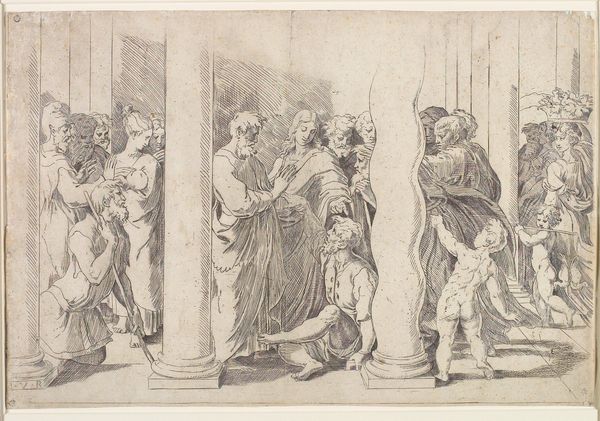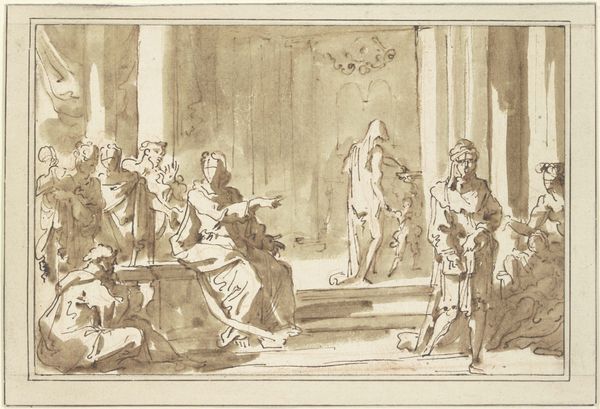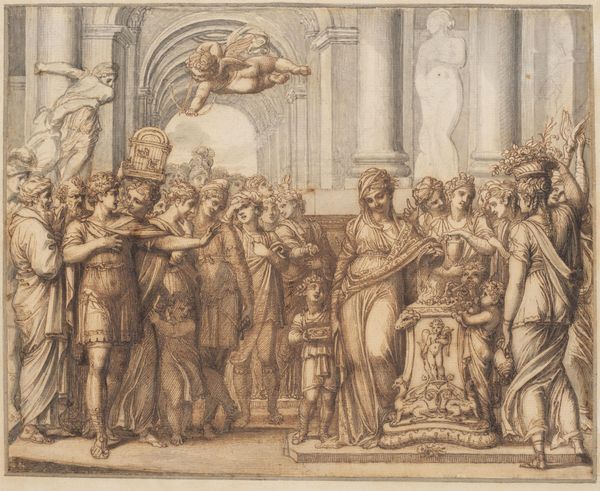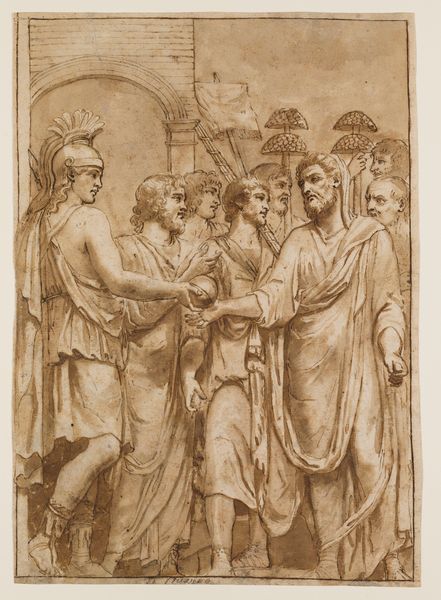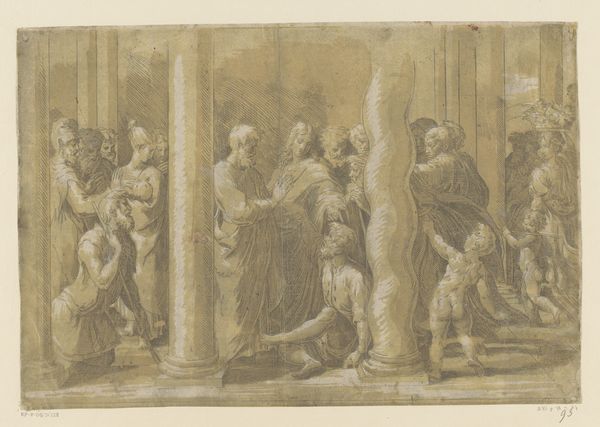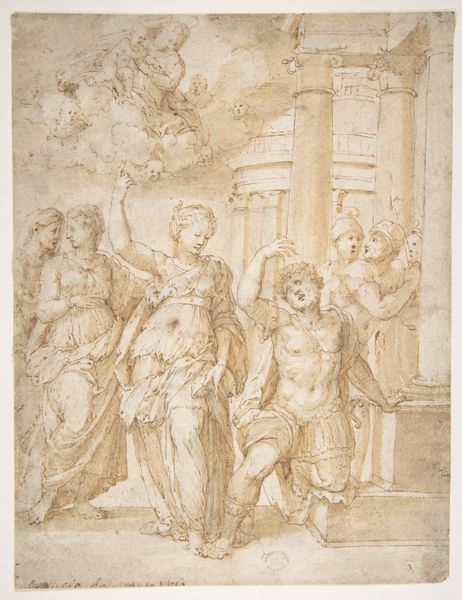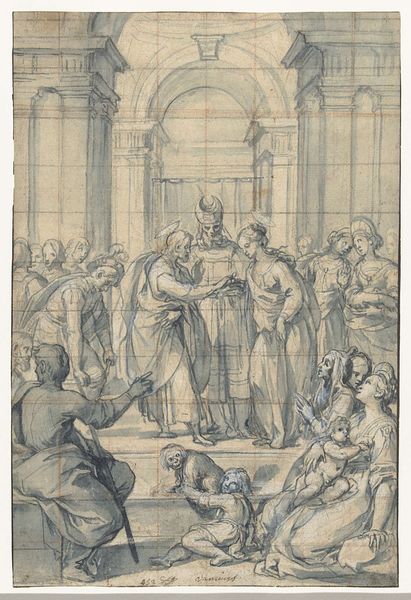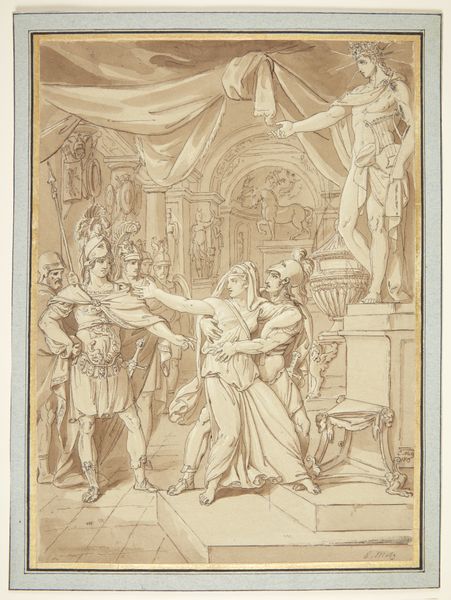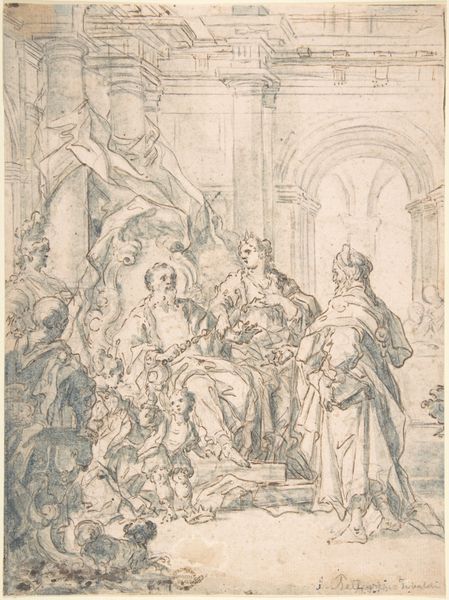
Helgen omgivet af engle, forarbejde til altertavle 1570 - 1647
0:00
0:00
drawing
#
drawing
#
narrative-art
#
figuration
#
11_renaissance
#
history-painting
#
academic-art
Dimensions: 295 mm (height) x 272 mm (width) (bladmaal)
Editor: This is a drawing by Pedro Orrente, "Helgen omgivet af engle, forarbejde til altertavle" – roughly translated, "Saint Surrounded by Angels, study for an altarpiece". It's from sometime between 1570 and 1647. It’s rendered in this beautiful warm reddish-brown tone. The composition feels very classical. What do you see in this piece? Curator: Primarily, I note the dominance of line. Consider how the artist uses line to define form and to delineate the figures. The linear quality flattens the space. We observe a classical architectural setting implied, yet it remains a backdrop secondary to the human forms which it contains. The palette is remarkably limited. The restricted range invites focus on shape and composition. Editor: So, it's less about the color, more about how the artist uses shapes? Curator: Precisely. Reflect on the artist’s conscious choices regarding value. Where is the darkest value? Where is the lightest? Note how they serve to guide the eye through the composition, establishing a visual hierarchy. The eye dances between these high-contrast moments of interest. Editor: That makes sense! The placement of the figures does seem very deliberate. Almost like a stage production. Curator: The artist's command of anatomy contributes. Observe the varying poses and how those poses give clues to individual expression within a larger narrative frame. A keen student of the human form would certainly be familiar with creating implied movement even in stasis. Editor: It is incredible to think how many decisions artists make to produce this effect on the viewer. Curator: Indeed. By reducing the image to its elemental forms and organizational logic, we grasp the artist’s skill and aesthetic intention at its most foundational. These techniques were useful for future works such as paintings and are exemplified by these well placed and rendered forms.
Comments
No comments
Be the first to comment and join the conversation on the ultimate creative platform.
